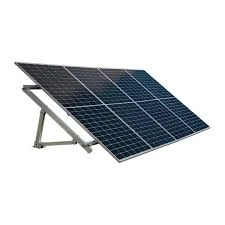Cost Analysis of Residential Solar Panel Installation and Investment Benefits
The Price of Solar Panels for a House An Overview
In recent years, the adoption of solar energy has surged, driven largely by its environmental benefits and the increasing desire for energy independence. One of the most significant factors influencing homeowners’ decisions to install solar panels is their cost. Understanding the price of solar panels for a house requires an exploration of various components, including initial costs, long-term savings, and incentives.
The upfront cost of solar panel installation can vary widely depending on several factors. On average, homeowners in the United States can expect to pay between $15,000 and $25,000 for a complete solar system. This price range typically covers the panels, inverter, wiring, and installation labor. The size of the system is a primary determinant of cost; larger homes or those that consume more electricity will generally require more panels, thereby increasing the overall expense. Additionally, the type of panels chosen can affect the price. Monocrystalline panels tend to be more efficient and thus more expensive, while polycrystalline panels are often more budget-friendly but may offer lower efficiency.
Beyond the initial investment, it’s essential to consider the long-term savings that solar panels can provide. By generating their electricity, homeowners can substantially reduce their monthly utility bills. In many cases, the savings on electricity can offset the initial installation costs within 5 to 10 years. Moreover, solar panels increase a home’s resale value, with studies showing that homes equipped with solar energy systems sell for about 4% more on average than those without them. This financial incentive further underscores the value of solar investment.
price of solar panels for a house

Government incentives also play a crucial role in making solar energy more accessible. In the United States, the federal solar tax credit allows homeowners to deduct a significant percentage of the cost of solar installation from their federal taxes. As of 2023, this tax credit is set at 30%, which can lead to substantial savings. Additionally, various states offer their own incentives, such as rebates, tax credits, and renewable energy certificates, which can further reduce the overall financial burden. Homeowners should research the specific incentives available in their state or locality to maximize their savings.
Financing options are another important consideration when it comes to the price of solar panels. Many homeowners opt for solar loans, leases, or power purchase agreements (PPAs). A solar loan allows homeowners to purchase the system and pay the loan off over time, usually through manageable monthly payments that align with their energy savings. Alternatively, leasing or entering a PPA may require little to no upfront cost, but the homeowner does not own the system and may not benefit fully from tax incentives.
In conclusion, while the price of solar panels for a house can seem daunting, a closer examination reveals that long-term savings, government incentives, and financing options can make solar energy an affordable and appealing investment. Homeowners looking to invest in solar should carefully evaluate their energy needs, research available incentives, and consider different financing options to find the most suitable solution for their circumstances. Ultimately, the transition to solar energy not only contributes to a sustainable future but can also provide significant financial benefits to homeowners.
-
String Solar Inverter: The High-Efficiency Solution for Smart Solar EnergyNewsJul.14,2025
-
Revolutionizing Rooftop Energy with the Power of the Micro Solar InverterNewsJul.14,2025
-
Power Independence with Smart Off Grid Solar Inverter SolutionsNewsJul.14,2025
-
On Grid Solar Inverter: Powering the Future with Smart Grid IntegrationNewsJul.14,2025
-
Monocrystalline Solar Panels: High-Efficiency Power for the Future of Clean EnergyNewsJul.14,2025
-
Bifacial Solar Panel: A Smarter Investment for Next-Generation Energy SystemsNewsJul.14,2025







